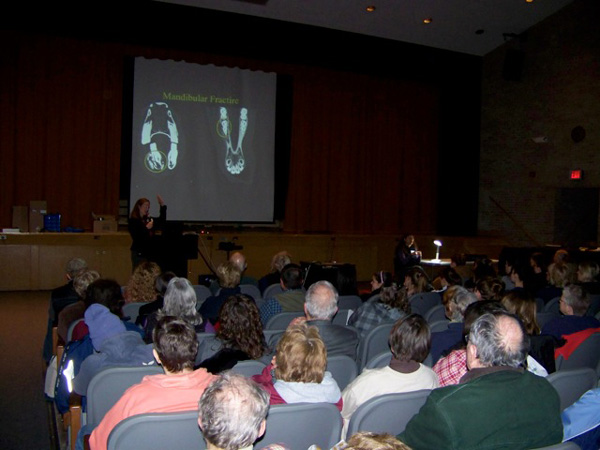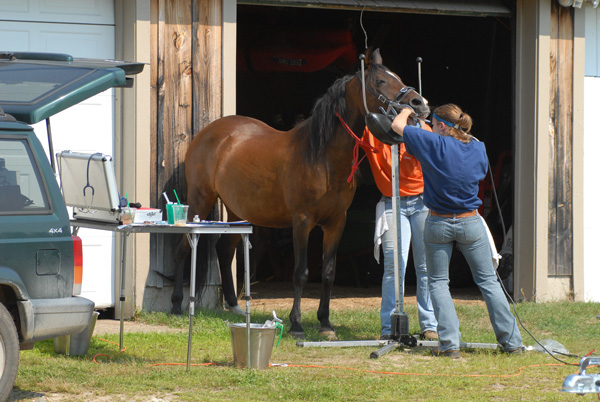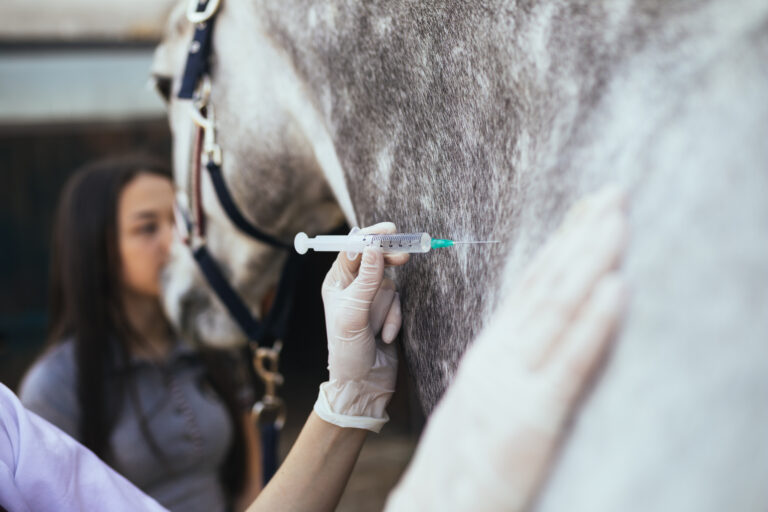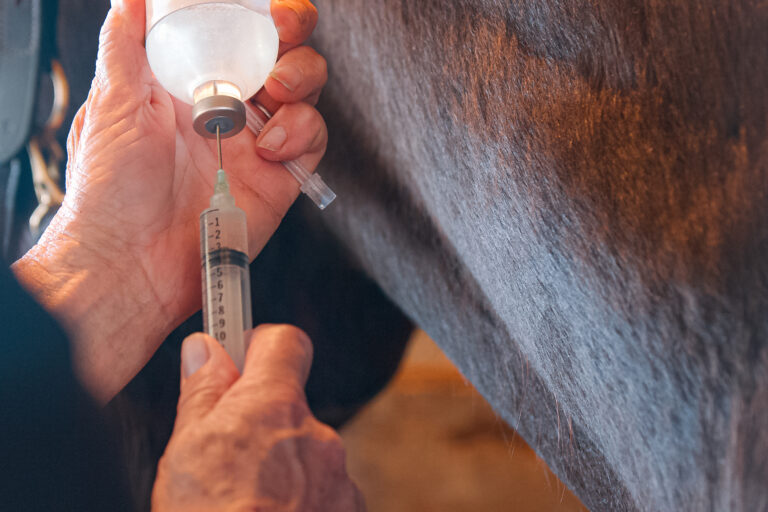
If ever advertising carried a stigma in the veterinary profession, that dark mark seems to have dissipated. In fact, said current American Association of Equine Practitioners (AAEP) president Ann Dwyer, DVM, “Marketing and advertising are more important today than ever, with the challenges to practice business models and increasing competition from unlicensed, untrained lay individuals.”
Not only is advertising beneficial to practices, she added, but it’s good for the horse community as a whole. “It fosters awareness in the horse-owning public of services that help horses, and it often supports local organizations or horse events, as your business may pay fees to have ads in show programs, banners at events and so on,” she said.
Here, Dwyer and Charlotte Lacroix, DVM, JD, owner of Veterinary Business Advisors in Flemington, New Jersey, share insights on how to effectively promote your practice without losing professional credibility or falling into ethical potholes.
Keeping It Professional and Legal
Dwyer co-owns Genesee Valley Equine Clinic, LLC, in Scottsville, New York. She believes that veterinarians don’t generally engage in negative or crass advertising. However, she does note a few red flags to avoid, such as publicly advertising fees or making public statements that cast a poor light on competing practices.
Lacroix is a veterinarian and lawyer whose company specializes in business strategy and risk management. She pointed out three additional factors to consider when developing advertising:
Regional etiquette: What’s appropriate in one geographic location may be considered unsuitable in another. For example, said Lacroix, “In Florida, advertising tends to be more aggressive and flashier as a general rule, not just with equine veterinarians.”
Ethics: The AAEP website lists advertising guidelines from the American Veterinary Medical Association’s (AVMA) code of professional ethics. (Download the PDF at aaep.org/ethics_prof_guide.htm and see section IX – Advertising.) While not legally binding, they are a helpful foundation for evaluating the professionalism of your advertising and marketing endeavors.
Laws and regulations: For the true legal scoop, turn to your state’s practice act. Go to aavsb.org, then search your state board’s website under Board and Agency Directory. Click on your state’s Practice Act and Regulations to determine if advertising is addressed by your state board.
“In general, advertising is not prohibited as long as it’s not misleading,” said Lacroix.
One helpful rule of thumb, she added, is to stick with the facts. “Say what you do, not an assessment of what you do,” she advised. “For example, it’s safer to say you have 20 years of experience, are board-certified practitioners or that your practice focuses on hunter/jumpers than to say, ‘The best vet in the West.’ ”
And, suggested Dwyer, “Use good judgment. You may want to run your intended wording by other people to get that second opinion.”
A special note on endorsements: “Everyone has to have their own comfort level for this,” said Dwyer. “I wouldn’t do it myself, but I wouldn’t criticize others, either. If you truly love a product and want to endorse it, that’s great.” Just realize that your endorsement should include a full disclosure if you’re being paid to support the product, said Lacroix.
A special note on confidentiality: “Especially since social media has become a focus, you have to be very sensitive to client information and what’s inappropriate information to share,” stressed Dwyer.
Be sure to get your client’s permission before using any of his case information in your advertising or marketing. That includes photos, X-rays or other potentially identifiable details.
“You can talk about a case in a generic manner,” said Lacroix. “But be careful and look at whatever you post in the most conservative light. You don’t want to disclose any client confidential information.”
Getting the Word Out
Basic advertising is essentially designed to grab attention, get the word out that your practice exists and provide some basic information, such as your practice name, location, services, specialties and contact information.
When you think of advertising, you might automatically picture a splashy, four-color ad in a national magazine, a small black-and-white ad in the local newspaper or maybe even a radio spot. But advertising can take many other forms, too. Consider:
· Online promotions, such as banner ads or Google ads
· Decals on your practice vehicles
· Sponsorships such as show programs, individual classes or year-end awards
· Special honors (Dwyer’s practice hands out an Educator of the Year award to someone in the community who has given back to the horse world.)
Making it Count

Advertising is just one way to promote your practice. Many other strategies can accomplish that task while also enhancing relationships with clients and building goodwill for the practice. In fact, said Dwyer, “The best professional marketing combines getting your business name out there in the horse community and client education. It’s a real win-win.”
Lacroix agreed: “One of our biggest roles as veterinarians is to be educators.”
Embracing that role, she said, can build stronger relationships with clients because you provide more than just a service—more than just the annual vaccinations.
Two ways that Dwyer’s practice combines marketing with education are through its annual seminar and through its short course series.
Annual seminar: Held at a local high school, this event typically features two main speakers, short presentations by staff vets (including interpretations for the deaf), refreshments and a trade show with exhibits from local and national vendors and horse clubs. The event is free to the public, with attendance running from 250 to 400 people. It costs about $6,000 to produce the seminar, but Dwyer said the practice ultimately breaks even, offsetting costs with sponsorships from national and local businesses. She notes that smaller practices may find it more feasible to work with a local feed store to host a downsized version.
Short courses: The practice hosts about six two-hour courses per year at its clinic, with each vet taking a turn teaching on topics ranging from breeding to lameness and diseases. Attendance costs about $8, and usually 10 to 30 sign up.
Other ways that you can provide value to your clients while keeping your practice positioned as reliable experts include:
· Posting articles and other informational materials on your website (don’t forget information about your staff);
· Sending client newsletters and informational emails;
· Acting as a resource for horse groups and publications—for instance, speaking at a local Pony Club meeting or agreeing to a magazine interview on a horse care topic;
· Sharing tips through social network sites, such as Facebook;
· Producing short, educational videos for YouTube.
Take-Home Message
The bottom line is that there’s no harm and no dishonor in letting the equine community know that your practice is ready and able to care for their horses. In fact, it can be quite a useful service if you can combine that promotion with supporting local clubs and events, and helping educate owners on the proper care of those horses. As Dwyer said, a real win-win.
SIDEBAR
More Marketing Tips
Here are a few more tips on how to advertise or market your practice. Pick and choose what might work best for you, but be willing to try a few new things each year.
Tap team members, such as interns and front desk staff, for marketing ideas or to help keep up with social media engagement.
Measure performance, such as replies to a specific ad, “likes” and comments on your Facebook page, email or e-newsletter opens and click-through rates, or new client inquiries after a show sponsorship. Ask new clients, “How did you hear about us?”
Stretch your budget by looking for partners, such as companies who might be willing to sponsor your client education events.
Leverage free resources, such as aaep.org, which has downloadable presentations, owner-education articles and other content that you can use as informational marketing material.
Keep learning about advertising and marketing tools and tactics; inexpensive opportunities often exist through vendors (i.e., email service providers like Constant Contact), community college courses, peer groups, and, of course, EquiManagement and EquiManagement.com.




